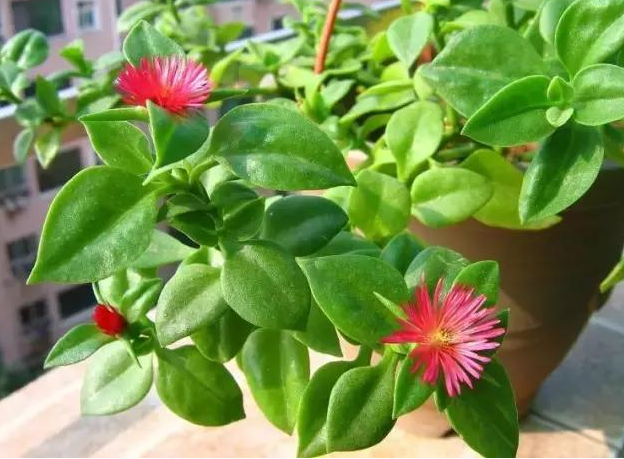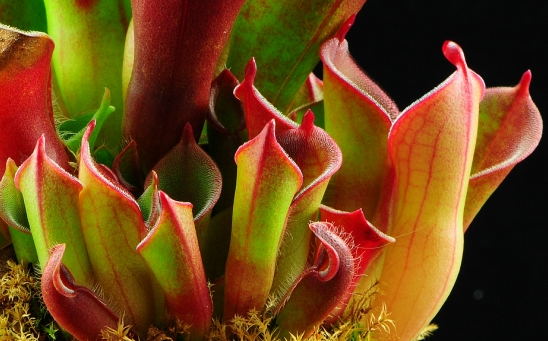How to raise peony orchids to blossom and when to blossom
To talk about this peony hanging orchid, this is what many people like, with peony-like flowers, hanging orchid-like fishing, to see how peony hanging orchid can blossom? When will the peony orchid bloom:

How to raise peony orchids to blossom:
1. Lighting control
Peony orchids are more sunny plants, want to bloom more, but also to give sufficient light, at least more than 6 hours of light every day, the most suitable for growing in the south or west windowsill, winter can be seen through the windowsill. (proper shade is needed in summer)
2. Pay attention to watering
The peony hanging orchid likes the warm and moist environment, the water demand is also quite high, of course, it is necessary to reduce watering appropriately in winter. Keep the basin soil moist in summer, as long as the basin soil does not accumulate water.
After cooling in autumn, we began to reduce the watering frequency and keep the soil slightly dry. If your peony orchid leaves are particularly luxuriant, but there are no flowers, it is necessary to properly control the water, let the pot soil dry for a while, in order to give birth to buds.
3. Skills of fertilization
Peony hanging orchid likes thin fertilizer, thin fertilizer can make the plant more robust, combined with proper pinching, can make it grow luxuriantly, more conducive to the gestation of buds.
Generally more fertilizer is applied in spring and autumn, but not in winter. Thin fertilizer can be given twice a month in spring and autumn. Ordinary compound fertilizer or rotten cake fertilizer is OK. If you want to blossom more easily, you can water potassium dihydrogen phosphate once a month to promote the gestation of more buds.
4. Overwintering maintenance
Winter maintenance of course to pay attention to cold, reduce the frequency of watering, you can cut off some cross branches, used for cutting reproduction, pay attention to maintain a certain indoor air humidity, the temperature to maintain more than 5 degrees. Proper pruning can be carried out to cut off some branches that are too long or too dense to conserve nutrients so that they can blossom more in the coming year.
5. Soil and basin change
Peony hanging orchid likes loose humus soil, choose the mixture of rotten leaf soil, garden soil and river sand, or directly use peat soil with perlite, its root system is fleshy, so drainage must be guaranteed.
Potted peony orchids are usually changed once every two years. When changing pots, the withered and old roots can be cut off properly. After putting them on the pot, they can be maintained in the shade for two weeks and see the light slowly.
When will the peony orchid bloom:
The peony orchid usually blossoms from July to August and has a long flowering period. The flowering period of the peony orchid, one is the single flowering period, the other is the whole flowering period, generally speaking, the single flowering period of the peony orchid can bloom for two or three days, bloom during the day and close at night, while the flowering period of the whole pot can last for 3-4 months, that is, from spring to autumn, it blossoms one after another, especially from July to August.
About the flowering time of the peony orchid and how to raise the peony orchid to blossom more flowers here, hurry up to raise one in your own home!
How to fertilize the peony orchid without blossom?
Peony orchid is a kind of flowering succulent, but in reality, many people who raise peony orchids find that their own meat shows no sign of flowering. How to fertilize peony orchid? What if it doesn't bloom:
How to fertilize the peony orchid:
1. Fertilizer and soil
Peony orchid is a foreign species, it is suitable to grow in a warm and dry growth environment, the choice of the soil is to ensure fertile, but also have good drainage, must not be too moist and weak soil fertility. In order to meet the requirements of suitable soil quality, we need to add organic fertilizer to the soil to ensure its growth.
2. Fertilizer and light
The peony orchid needs enough sunlight during its growth, and when it grows rapidly in summer, it has a greater demand for nutrients, so it should be illuminated with nutrient solution to ensure the supply of nutrients during its growth.
What if the peony orchid does not blossom:
1. Control the frequency and dosage of watering. Because the peony orchid is very easy to cultivate, the amount of watering can be controlled, and the appropriate amount of water can be watered when the potted soil is dry, because excessive or frequent glue will make plants absorb a large amount of nitrogen and phosphorus for stem and leaf growth, while the insoluble potassium fertilizer can not be replenished in time, which will affect flowering and fruit setting, so the peony orchid in some flower friends' homes has luxuriant branches and leaves but no flowers.
2. Bask in the sun. Peony Cymbidium is made into a kind of succulent plant, which can not only enlarge and widen the leaves, but also effectively promote the opening of flowers. When basking in the sun, it is recommended that it be carried out in the morning and afternoon, especially in summer, do not expose yourself to the sun and give proper shade. Otherwise, it is easy to burn the buds.
3. Use fertilizer or nutrient solution to promote flowering. Because potash fertilizer can effectively promote flower growth, flower fertilizer containing potash fertilizer can be used. Here, the editor recommends that we use "Huaduoduo 2" fertilizer to fertilize to speed up the flowering of peony orchids.
All right, do you understand the knowledge of peony hanging orchid?
Why don't peony orchids blossom? peony orchids blossom in a few months.
For the question of whether the peony orchid can blossom, I believe most people's answer is the same, peony orchid is a kind of flowering succulent, but in reality, there are many people who raise peony orchid find that their own meat has no sign of flowering. Why?
Why don't peony orchids blossom?
First, the plant is not yet an adult.
Second, lack of potassium fertilizer and phosphate fertilizer. It is not that the plants are healthy when the leaves are green. Once there were people who did not know how to fertilize reasonably and applied a large amount of nitrogen fertilizer to the crops. As a result, they had more leaves but did not sprout and blossom.
Peony Cymbidium blossoms in several months
The peony orchid usually blossoms from July to August and has a long flowering period. The flowering period of the peony orchid, one is the single flowering period, the other is the whole flowering period, generally speaking, the single flowering period of the peony orchid can bloom for two or three days, bloom during the day and close at night, while the flowering period of the whole pot can last for 3-4 months, that is, from spring to autumn, it blossoms one after another, especially from July to August.
What if the peony orchid doesn't blossom?
1. Control the frequency and dosage of watering. Because the peony orchid is very easy to cultivate, the amount of watering can be controlled, and the appropriate amount of water can be watered when the potted soil is dry, because excessive or frequent glue will make plants absorb a large amount of nitrogen and phosphorus for stem and leaf growth, while the insoluble potassium fertilizer can not be replenished in time, which will affect flowering and fruit setting, so the peony orchid in some flower friends' homes has luxuriant branches and leaves but no flowers.
2. Bask in the sun. Peony Cymbidium is made into a kind of succulent plant, which can not only enlarge and widen the leaves, but also effectively promote the opening of flowers. When basking in the sun, it is recommended that it be carried out in the morning and afternoon, especially in summer, do not expose yourself to the sun and give proper shade. Otherwise, it is easy to burn the buds.
3. Use fertilizer or nutrient solution to promote flowering. Because potash fertilizer can effectively promote flower growth, flower fertilizer containing potash fertilizer can be used. Here, the editor recommends that we use "Huaduoduo 2" fertilizer to fertilize to speed up the flowering of peony orchids.
4. Control the temperature. The most suitable environment for the formation of peony orchid is room temperature (about 20 degrees). Too low temperature may cause the peony orchid to enter the dormant period, and the peony orchid in the dormant period will appear the phenomenon of flower fall. When the temperature is too high, there will be only long leaves but no flowering.
5. Peony Cymbidium blossoms every year from March to October. Therefore, after entering the winter, the peony orchid will shed all the buds to maintain the nutrition and moisture needed by the roots.
6. In addition, we also need to give you some suggestions: first, the basin soil should choose humus with good air permeability and strong fertilizer consolidation ability. Second, the peony orchid is pinched or trimmed regularly or irregularly, so as to maintain the ornamental nature of the peony orchid.
What if the leaves of peony hanging orchid are soft?
First of all, you can check whether the rhizome is rotten, if it is rotten, stop watering immediately, then cut off the rotten part, and then re-cut it.
Pay attention to the usual light, you can put it under the sun in the morning and evening, but when it comes to noon, when the sun is big, you have to move your position to avoid direct sunlight.
Pay attention to watering, the basin soil can be kept in a semi-dry and semi-wet state, do not wet and do not accumulate water.
Generally speaking, there are two main problems that meat does not blossom: first, it is not old enough and not yet mature; second, there are not enough nutrients to provide the business of flowering, so what we need to do is to wait patiently and provide a suitable growth environment for meat in time.
- Prev

What is the reason for the fallen leaves of Honeysuckle?
What is the reason for the fallen leaves of Honeysuckle?
- Next

The cultivation method of Judith bottle grass when to sow
Judith bottle grass, do not underestimate this plant, this can catch pests, let's take a look at the cultivation method of Judith bottle grass? When will Judith bottle grass be sown: Judith bottle grass is a hybrid insectivorous plant native to the United States with bottle-shaped erect or recumbent leaves
Related
- Fuxing push coffee new agricultural production and marketing class: lack of small-scale processing plants
- Jujube rice field leisure farm deep ploughing Yilan for five years to create a space for organic food and play
- Nongyu Farm-A trial of organic papaya for brave women with advanced technology
- Four points for attention in the prevention and control of diseases and insect pests of edible fungi
- How to add nutrient solution to Edible Fungi
- Is there any good way to control edible fungus mites?
- Open Inoculation Technology of Edible Fungi
- Is there any clever way to use fertilizer for edible fungus in winter?
- What agents are used to kill the pathogens of edible fungi in the mushroom shed?
- Rapid drying of Edible Fungi

